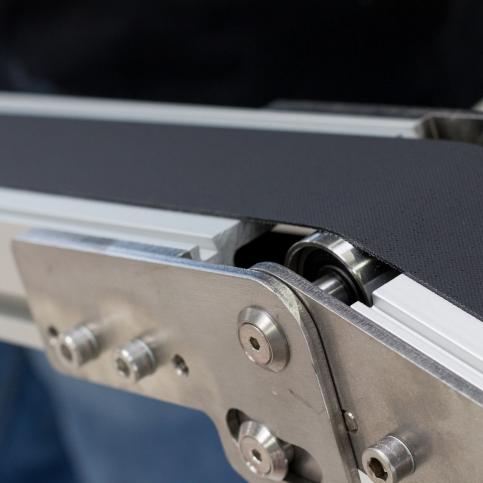
What Is The Durometer Of A Conveyor Belt And Why Is It Important?
When it comes to selecting a conveyor belt for an operation, plenty of factors need to be taken into consideration. The basic ones include the type of material to be transported, its weight and dimensions, the operating temperature in which the conveyor will function and more. However, there is another factor that is equally important, which is the hardness or durometer of a conveyor belt. The basics of this property and its importance will be explained below.
What is the hardness of a conveyor belt?
Essentially, the durometer or hardness of a conveyor belt is a measure of its resistance against forming a permanent indentation. It can also be considered as the resistance offered by the belt when it is penetrated by a sharp object. The device which is used to measure this hardness is known as the durometer, which is also synonymous with the measurement itself.
Also known as the Shore Hardness Test, the durometer is mainly used to measure the hardness of different types of polymers, as well as rubbers and elastomers, which takes place on a scale of 0 to 100, with 0 being the lowest and 100 being the maximum value for hardness. There are around 12 durometer scales that are considered the standard, out of which, the Shore A and Shore D scales are the most commonly used ones for conveyor belts.
How Does A Durometer Work?
Depending on the scale, in this case, Shore A or Shore D, the process of taking a measurement differs slightly. To measure the hardness of a given conveyor belt, take the instrument (durometer) and indent or penetrate the side of the belt with it to get an accurate reading, for it shouldn’t pierce the fabric beneath.
To further clarify, here are a few examples of a durometer reading:
- In the case of SBR rubber used in belts, the reading on a Shore A scale reads around 60.
- In the case of a PVC conveyor belt, the reading on a Shore A scale reads around 70.
- In the case of a polyurethane belt, the reading on a Shore A scale reads around 90.
Importance of Hardness In Conveyor Belts
When it comes to conveyor belts made of rubber, polyurethane or other elastomers, the reading signifies 2 important things:
Flexibility:
This is the flexibility of the belt, especially in reference to the end rollers. Materials with lower hardness have better flexibility.
Coefficient of Friction (CoF):
This is the amount of friction that is exerted between two surfaces. In this case, between the surface of the belt and the material being transported. Materials with lower hardness also have lower CoF.
However, it is important to note that lower or higher durometer numbers don’t directly reflect the quality of a belt, for it mainly depends on its application.
Norpak Handling has been providing businesses throughout Canada with top-of-the-line conveyor belts and conveyor products for decades. Get in touch with us today to learn more about how we can provide material handling solutions that are tailored to your business.









